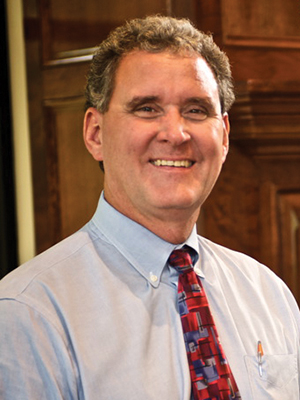
David Ammons
David Ammons is president of Retirement Living Associates, Inc. (RLA), a company which provides planning, development, marketing, and management services for new and existing retirement communities. He has worked in and with Senior Living Communities since his graduation from Wake Forest University in 1985. Contact David Ammons at david@rlainc.com or 919-783-0044 ext 21.
More importantly, why have intergenerational living?
I love this question because we have had, for 30-plus years, residents living side-by-side that are a generation apart. This concept of more than one or two generations living in a community is a growing question and consideration.
Often solutions geared towards promoting Intergenerational are borrowing from new urbanism and higher density developments to merge generations together. The range of what merged together looks like and creates is diverse; from on-site preschool, to young family focus as well as senior-focused. For some, it is intergenerational to design homes that simplify aging in place physically.
Currently I am working on a new development, Legacy at Mills River, in the larger Asheville market, and a new member of our team is Elizabeth Ford. Elizabeth assisted in creating this article and her newness to the senior industry is refreshing, as she looks at what a retirement community could be, or may I say should be, beyond the obvious services and amenities that are generally made available.
Legacy is situated on over 110 acres yet still setting up plans to extend intergenerational living to residents. Legacy’s next-door neighbor is Hollabrook Farm, a planned community on 163 acres with over 100 homes. The community boasts American Farmhouse architecture, with large porches where family and friends connect and share the simple pleasures of life together. Residents are drawn to this neighborhood for its amenities like the pool, the pavilion, and the walking trails throughout.
Hollabrook Farm and Legacy residents have more than a zip code in common. The seven-acre, fully stocked fishing pond complete with pier and many walking trails are a shared amenity. All generations enjoy the rest and renewal a day of loitering, hiking, or fishing provides. Programming will be in place to encourage and allow for the various generations and neighbors to interact – maybe even while fishing.
Both communities have been designed with a high priority on walkability and green spaces, attracting residents with dogs, strollers, and an itch to get outside. Our vision is to have an “open-door policy” where residents have access to each other’s walking trails and open spaces. It will be common to meet a young family on an evening walk or see a passing jogger as you stroll the grounds of either property.
Beyond the focus on spending time together and enjoying common spaces, many intergenerational programs include seniors tutoring younger generations or babysitting for a young family. The young family may help with cooking or running errands, and all benefit from the diversity of ages.
Other examples are a teenager looking for a job working at the retirement community, senior residents filling in roles of surrogate grandparents, and offering support to young families in creative ways.
I am not alone in my industry in the excitement and commitment to building community by not only being good neighbors but by pursuing opportunities that break down barriers among different age groups and forge unique friendships in the process.

